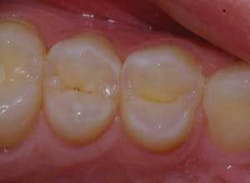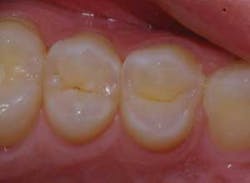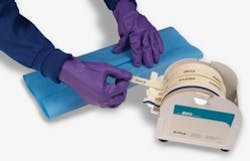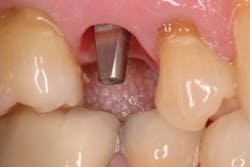Instrument Management Systems – The Ultimate Safety and Efficiency Tool
by Mary Govoni
The use of instrument cassettes has changed the face of instrument management in many dental practices and other dental facilities. The benefits of utilizing cassettes, also known as instrument management systems, are numerous. The three key benefits are organization, efficiency, and enhanced safety for the dental team members.
Before we look at the organization and efficiency gained by utilizing cassettes, let’s look at the safety factor. The OSHA Bloodborne Pathogens Standard1 states that sharp, contaminated instruments must be transported from a work area to a cleaning/sterilization area in a closed, puncture-resistant container. This helps prevent sharps injuries to health-care workers who are handling and transporting the instruments. Although the instruments in private dental practices are typically not transported long distances, the hazard exists nonetheless. In educational settings or large clinics, the instrument processing area may be located quite a distance from the treatment areas, increasing the hazards of handling and transporting loose instruments with contaminated, sharp ends. A study published in the Journal of the American Dental Association (JADA) several years ago indicated that punctures from contaminated instruments was one of the most common injuries classified as an exposure incident2 in dental facilities.3 The proper use of instrument cassettes eliminates this potential hazard and assures that the facility is in compliance with OSHA standards and also with the Centers for Disease Control and Prevention (CDC) guidelines.4
In addition to enhanced safety, instrument cassettes assist dental teams in keeping instruments organized, in particular by procedure. The cassettes are typically divided into two categories in general practices – hygiene setups and restorative setups. These can be further subdivided into types of hygiene procedures: pediatric, prophylaxis, perio/root planing; and types of operative procedures: amalgam, composite, crown/bridge, etc. Setting up the system should begin with making a list of the most commonly used instruments and items for each procedure. The next step is determining the size and configuration of the cassette, based on the number and type of instruments to be placed in the cassette.
There are several efficiencies that can be realized by using instrument cassettes. When setting up, the team members simply need to select the appropriate procedure cassette from storage. Time savings is achieved when only one cassette, rather than several packages of instruments, needs to be retrieved in preparing the treatment room. Some additional disposable items may need to be added during the treatment room setup. These consumables can be stored and organized into color-coded procedure tubs and can be stored in central sterilization.
During treatment, the cassette can be opened and utilized as the delivery system to keep the instruments organized. In addition, color-coded and variably positioned instrument rings can be placed on the instruments to indicate the sequence in which the instruments are used. This makes it very simple to place instruments back in their designated spots after use. It is faster and easier to find and retrieve the instruments when they are organized, rather than placed loosely on a tray or work surface.
When the procedure is completed and the instruments are secured in the cassette, it can be closed and locked, and then be safely transported to the processing area. Once there, the entire cassette is placed into the ultrasonic cleaner or instrument washer (Figure 1). Because the instruments do not need to be handled individually either before or after cleaning, this allows for faster instrument processing. In addition, cassettes also help extend the lifetime of the instruments as the working ends are protected during cleaning versus being loose in an ultrasonic basket where the tips can oftentimes get stuck.
FIG. 2
Once the instruments are cleaned, rinsed, and dried in the cassette, the cassette needs to be wrapped or placed into a sterilization pouch. The cassette is then placed into the sterilizer. Once the drying cycle is complete, the cassettes can be placed in the designated storage area.
FIG. 3
The CDC guidelines recommend that all instruments be packaged prior to sterilization unless they will be used immediately after removal from the sterilizer.5 The CDC guidelines also recommend placing a chemical indicator on the inside of each package. If the internal indicator is not visible from the outside, one should also place an exterior chemical indicator on the package.6 The indicator strip typically has a pass or fail indicator to assist the user in determining if the instruments in the cassette have been exposed to sterilization. When wrapping cassettes, a special autoclave tape should be utilized to secure the wrap. This tape also serves as an external indicator and is available in blank, colored, or with preprinted procedure names to assist in identifying the type of instruments in the cassette (Figure 2). If pouches are used, it is very easy to identify the cassettes as the rails holding the instruments can be color-coded according to the procedure type. Most pouches have indicators built in to the packaging material. Look for indicators that are underneath the “plastic” layer of the pouch (Figure 3).
It is important to note that implementing an instrument management system may require more than just planning the procedures and corresponding instrument setups. Since some older sterilizers may not accommodate many (or any) larger cassettes, a larger capacity sterilizer may be required (10” or larger). The same may be true for older ultrasonic cleaners (minimum 3 gallons).
There is a wide variety of sizes and types of cassettes available. Stainless steel cassettes tend to be more durable and less prone to breakage or warping as the cassettes are repeatedly cycled through the sterilizer. Specialty systems, such as oral surgery and orthodontic cassettes, are available to accommodate the different types of instruments utilized in these specialties. In addition, many cassettes have special clips and adaptors for items such as scissors or hemostats to keep the hinges open during sterilization, or needle recapping devices that can be placed inside the cassette for use during procedures.
No matter what type of practice setting, cassettes are an essential safety and organizational tool. If your practice or facility is not currently using an instrument management system, make it a priority to research the efficiencies that can be gained and implement one in the near future.
Mary Govoni, CDA, RDA, RDH, MBA, is the owner of Clinical Dynamics, a consulting company based in Michigan. She is a member of the Organization for Safety, Asepsis and Prevention. She can be contacted at [email protected].
The CDC guidelines recommend that all instruments be packaged prior to sterilization unless they will be used immediately after removal from the sterilizer
- Occupational Safety and Health Administration, CFR 29, Standard 1910.1030, (d)(4)(ii)(E) and 1910.1030, (e)(2)(ii)(B).
- Occupational Safety and Health Administration, CFR 29, Standard 1910.1030, (a).
- Journal of the American Dental Association, Vol. 128, Issue 9, 1253-1261.
- “Guidelines for Infection Control in Dental Health-Care Settings 2003”, http://www.cdc.gov/mmwr/PDF/rr/rr5217.pdf
- Centers for Disease Control and Prevention (CDC), Guidelines for Infection Control in Dental Health-Care Settings, 2003 .
- “Guidelines for Infection Control in Dental Health-Care Settings 2003”, http://www.cdc.gov/mmwr/PDF/rr/rr5217.pdf
Past DE Issues



